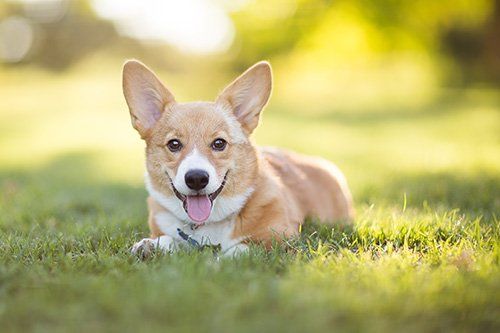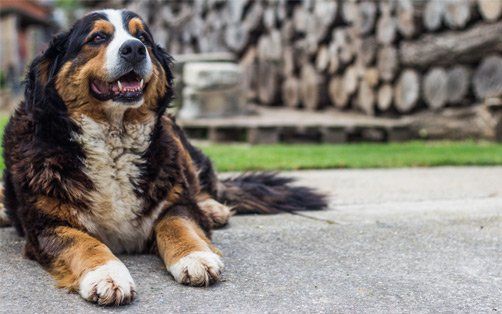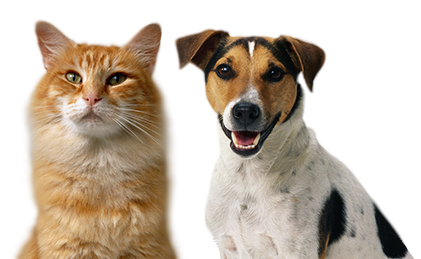3 Tips for Managing Your Dog's Weight
- By
- •
- 31 Jul, 2017
- •

Obesity can be just as big a problem for canines as it can be for humans, but many pet owners don't realize how serious a problem it can be. Just like you, your dog can suffer from serious health problems as a result of being overweight.
For example, dogs who are obese are at greater risk of developing diabetes, heart disease, high blood pressure and problems with their liver function. Obesity can also affect your dog's lungs, restricting their ability to expand and making it more difficult for them to breathe. Then there are the quality-of-life issues: an obese dog will have less stamina, less tolerance for heat and a shorter life span.
Luckily, there are things you can be doing to prevent your dog from gaining too much weight and to cut their calories if they're already overweight. Take a look at some useful tips that can help you keep your dog's weight in check.
1. Know What the Ideal Body Weight Looks Like
Obesity in dogs isn't always as easy to identify as dog owners might think. And since dogs come in a variety of shapes and sizes, there isn't an obvious ideal weight for all dogs - a lot depends on your specific breed and other factors.
Your veterinarian can let you know what your dog's ideal weight should be, but there are also signs that you can look for at home to let you know if your dog is maintaining a healthy weight or not. At their ideal weight, your dog's ribs will be palpable, with little or no excess fat over them. You should be able to easily see your dog's waist, and their abdomen should be tucked up when they're standing.
In an overweight dog, their ribs may be covered by a heavy fat layer and their waist may be absent. A very overweight dog may have a distended abdomen.
2. Keep Treats to a Minimum
Just like in humans, treats can be the downfall of a dog on a diet. While dog treats are handy as a reward, a training tool or a way of comforting your dog, you can easily feed your dog too much if you're not careful.
Although different treats have different caloric values, a good overall rule is to confine treats to about 10 percent of your dog's diet. That means that bigger dogs will be able to eat more treats and stay healthy than smaller dogs.
Keep an eye on the ingredients in the treats that you buy as well. Treats that contain mostly wheat, corn or soy are empty calories for your dog. Look for treats that are low on filler ingredients.
You may want to use a calorie calculator to help figure out the right amount of treats for your dog.
3. Consider an Automatic Pet Feeder
Even when it comes to their regular food, you should make portion control your watchword when it comes to canine weight management. Dogs often don't self-regulate, so you'll have to regulate their portions sizes for them. That means that simply keeping the food bowl full is a bad strategy.
Consider using an automatic pet feeder for your dog. This device offers a couple of advantages. For one thing, it's an easy and convenient way to make sure your dog gets just the right amount of food at the right times - even when you're away at work or otherwise unavailable.
Another advantage of using a pet feeder is that it allows you to distance yourself somewhat from the feeding process. It's hard to tell your dog "no" when they're begging for extra food, and it's easy to give into the temptation to overfeed them. A food dispenser can help you resist that temptation.
Talk to your veterinarian about your dog's weight and your strategies for managing it. Careful weight management now can help prevent your dog from dealing with a variety of health problems later.

Rabies Is Still Highly Prevalent in the Wild
Rabies Is Easier for a Feline to Contract Than Expected
- The animal hisses and spews saliva into your cat's eyes.
- The animal drips saliva onto an open wound on your cat.
- The animal licks your cat and the saliva enters their mouth, nose, or eyes.
Rabies Can Be Transmitted Quickly and Without Evidence

When you have had a dog for many years, it can come as a shock when they reach about 7 to 9 years old and are suddenly considered to be a senior. However, this is an inevitable part of your dog's life.
Keep Up with Their Dental Care
Watch Out for Signs of High Blood Pressure

You work tirelessly to care for your dog, from providing exercise and mental stimulation on daily walks to keeping up with essential vaccinations. When you think about all the things you do to keep your pooch happy and healthy, grooming may seem like one of your lowest priorities.
However, grooming is an important part of canine care, whether you have a short-haired Chihuahua or an Old English sheepdog. In fact, veterinary experts recommend grooming every four to eight weeks, depending on the length of your dog's fur.
In this blog, we list five of the reasons why regular, professional grooming is so important for your pet.





